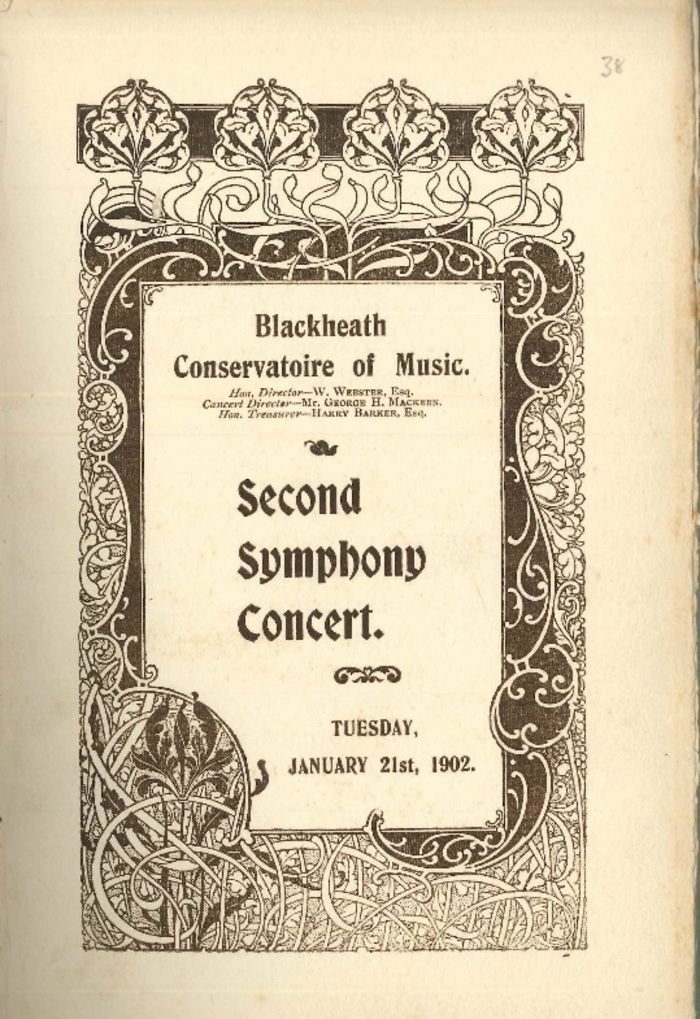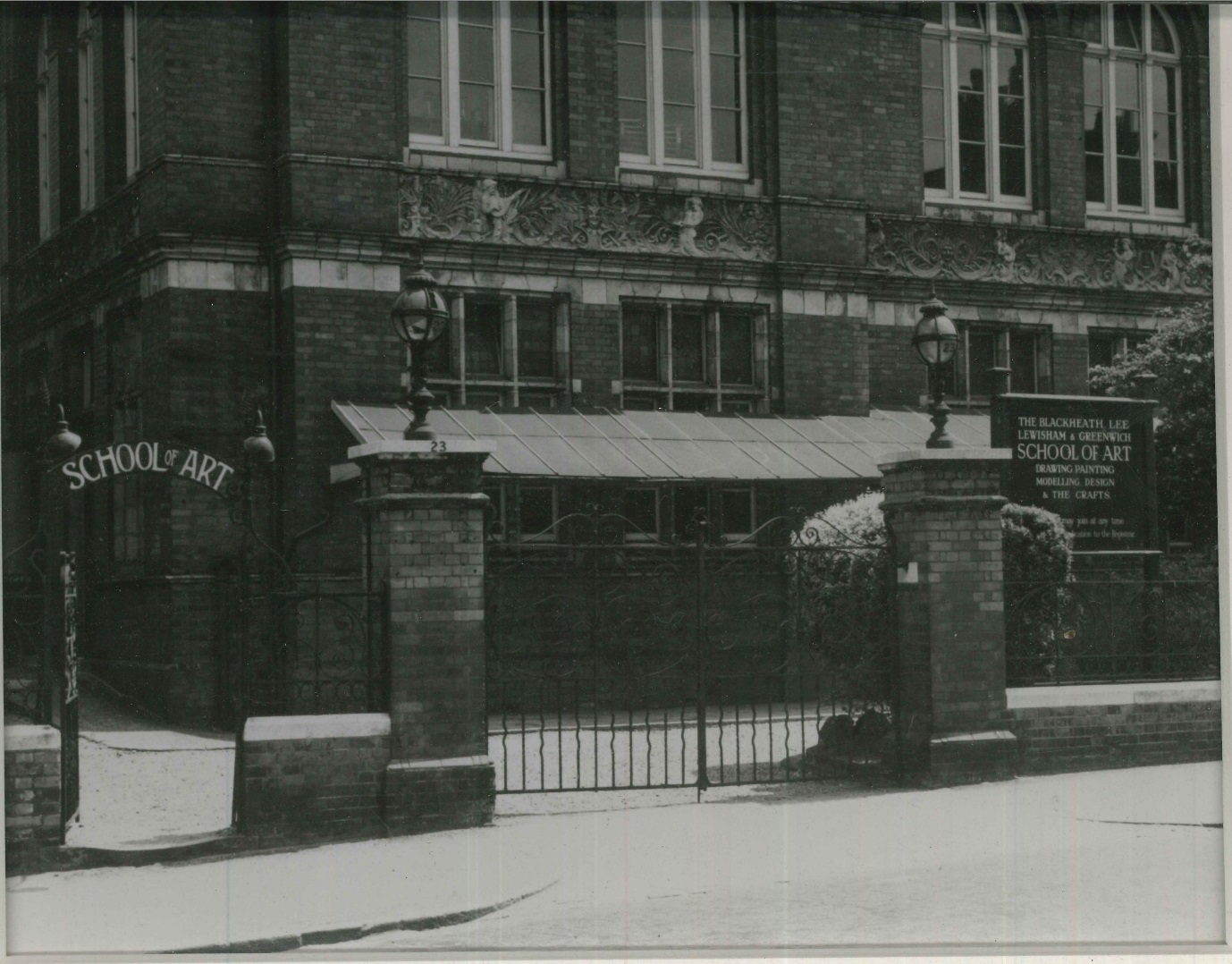History
The History of the Conservatoire, Blackheath
Today the Conservatoire delivers group and individual courses with classes suitable from birth to adult learning. We currently offer music and art classes. However, until just over 25 years ago the organisation was originally two entities, one focusing on music and the other art.
A Genuine Grassroots Community Initiative
The Blackheath Conservatoire of the Arts is the result of the grassroots action of the local South East London community. In 1881 local residents formed the Blackheath Conservatoire of Music, and, fourteen years later, the Blackheath, Lee and Lewisham School of Art. Driven by a desire to bring the arts to Blackheath they purchased shares in a company established by local resident William Webster. The income generated funded the building of the Conservatoire of Music (opened in 1896) and the School of Art (opened a year later), both designed by Edmeston and Gabriel and Grade 2 listed in 1992. Many of the founders were influential professional musicians and artists, which led to a very high quality of tuition. With the adjoining concert venue, the Blackheath Halls, we form part of the oldest surviving purpose-built arts complex in London.
William Webster – our Founder
William Webster (1855-1910) was a polymath, distinguished in many fields. Trained as a chemical engineer, he had many artistic and scientific interests. As an accomplished violinist, he played with professionals in public concerts. He also sung and had paintings exhibited in the Summer Exhibition at the Royal Academy. He was a fellow of the Chemical Society and perfected a system for the electrolytic purification of sewage, in addition to being a pioneer in X-ray research. It was this which contributed to his death at 55. His grave can be found in the nearby churchyard of St Margaret’s Lee.
Architecture
The current Music Building is built in the Queen Anne style of Leicester brick. To the front, there are three storeys and five windows. The first-floor windows have pilasters with round-headed pediment containing shell tympanum and a musical keystone. The Ground floor has cambered windows with keystones containing emblems of the British Isles. The basement was used as an air raid shelter during World War II. Graffiti from this time still exists on the walls.
Historic Classes
Known originally as the Blackheath Conservatoire of Music (BCM) the organisation has offered many different opportunities throughout the years for learning and study. Some of the many classes in addition to traditional individual music lessons have included in the early 1900s, Musical Kindergarten (the precursor to our very popular early years' programme), and Physical Exercise. Other interesting classes have included Fencing and Deportment, Elocution and Dramatic Classes and Modern Languages (French, German and Italian) all available to learn at the Blackheath Conservatoire of Music in 1915. Teacher training was even offered in 1921 for interested students wanting to become professors of music.
Alumni
For a community organisation, we have some very famous and high-achieving alumni.
- Daniel Day-Lewis – student in 1968 – 1969, who later became a multiple-Oscar-winning actor.
- Kate Bush – student here from 1970 to 1976.
- Gary Oldman – Oscar-winning actor, who studied piano here for 3 years from 1971. Check out an article in The Guardian here.
- Nova Pilbeam – studied drama under Gertrude Burnett in the late 1920s and early 1930s and later starred in The Little Friend and Hitchcock’s The Man who knew too Much.
- Beryl Laverick – also studied drama under Gertrude Burnett, starring in Alice in Wonderland in the West End in 1933.
- Jools Holland – self-taught jazz pianist studied here in the late 1960s
- Eska Mtungwazi, singer and Mercury music prize nominee, and former bursary recipient.

Concert Programme from 1902. The Blackheath Conservatoire of Music held concerts featuring guest musicians and students at the Blackheath Halls.
The Blackheath School of Art
Just a year after the opening of the Blackheath Conservatoire of Music, the Blackheath School of Art moved into its purpose-built premises. The Blackheath Academy of Art (founded in 1870) and the Government School of Art in Blackheath (established 1891) merged in 1895 to form the Blackheath, Lee and Lewisham School of Art and Science or Blackheath School of Art (BSA) as it was also known.
Architecture
The Art Building is a beautiful space, taking full advantage of the Northern light. It is one of the only remaining Victorian art studios in the country. At one time there was also a row of artists’ huts and teaching rooms alongside the studio.
Historic Courses
Among the many subjects taught at the school were Painting, Illustration, Enamelling, Woodcarving, Modelling, Embroidery, Bookbinding, Architecture & Perspective, Pottery, Textile Design, Silversmithing, and Commercial Design and Lettering.
The first use of Art as Therapy
The first principal was John Howard Hale who worked tirelessly promoting the school and its importance in the community until his retirement in 1928. Supported by Lady Kitchener, Hale initiated art therapy classes in 1918 for returning soldiers from World War I – persuading both teachers and students at the school to work with him at the Bermondsey Military Hospital in Ladywell, recognising, along with the doctor in charge, the potential of craft to hasten the recovery of soldiers.
Early Exhibitions
His successor was John Edgar Platt, a well-known exponent of the Japanese woodcut method. Both principals organised exhibitions and guest lecturers to help promote the important work going on at the school and to wider London audiences. The exhibitions included The Art of the Wounded Soldier in 1918, Save the Countryside exhibition 1930, Charles Paine Advertising Posters in 1931, Commercial and Artistic Printing Crafts in1933, Exhibition of BSA Teachers' Works in 1934 (including Charles Paine, John Platt, Douglas Bliss, James Woodford and others) and Contemporary Art Society Recent Acquisitions 1934.
Wartime Changes
The London County Council (LCC), the organisation, which was in overall control of London art schools, decided that the Blackheath School of Art should close in 1940. The LCC took back all of the equipment at the school. The school closed in September 1940 and effectively merged with Goldsmith’s – at the time the Blackheath School of Art had marginally more art students than Goldsmith’s. John Edgar Platt, along with a member of the teaching staff (possibly Charles Paine), went to work at Goldsmith’s and only two students decided to continue their art lessons at this time.

Entrance gate to the Blackheath School of Art, circa the 1930s.
Requisition and Re-opening
From 1940 to 1983 the Ministry of Defence Pay Corps took over the art building – it was not the first occasion that BSA had been displaced from its permanent home having moved for the army from 1918 to 1921 and relocating temporarily to 5 Lee Terrace, opposite St Margaret’s, Lee. The trustees of the art school remained in place, even though the school was no longer active, and decided to re-open the art school in 1983 after the vacation of the building by the pay corps.
Led by the designer Edward Pond, Neil Rhind and the Board of Trustees, the Blackheath School of Art re-opened in 1983. The school continued independently until the early 1990s when due to financial problems it merged to become a part of the Blackheath Conservatoire of Music and the Arts.
Today the art school delivers group and individual classes for students of all ages, starting from 6 months, in art, drama and music.
Student and Teaching Alumni
- Douglas Percy Bliss – teacher of wood engraving from 1930 to 1939. Studied at the RCA with his friends Eric Ravilious and Edward Bawden. Renowned wood engraver, painter and art historian. Later became the Director of the Glasgow School of Art and was responsible for the renewal of interest in Charles Rennie MacIntosh. His wife, Phyllis Dodd, also painted. In the Music Building Waiting Room visitors can see a painting by Phyllis Dodd, Portrait of Mrs Martin. Mrs Martin was the mother of Roger Martin co-founder of the Blackheath Society with Douglas Bliss (Dodd’s husband). Mrs Martin also taught at the Conservatoire in the 1930s. The painting is kindly on loan to the Conservatoire by the Bliss family.
- Charles Paine – taught commercial art at the Blackheath School of Art from 1932 to 1939 having met John Platt in Edinburgh. Well known for his advertising posters for London Transport and various other companies.
- Meryl Watts – a student at BSA from 1932 to 1938. John Platt held her in high esteem, keeping some of her colour woodcuts in his personal collection. Watts went on to create iconic black and white images of Port Merion village.
- Nora Cundall – a student at the school between 1904 and 1910. Later studied at the Slade School of Art under Walter Sickert. Travelled independently to Arizona in the 1920s and 1940s, writing about these experiences in Unsentimental Journey.
- John Skeaping – studied at the school for two terms in 1914 before transferring to Goldsmith’s. A sculptor and painter, he was the first husband of Barbara Hepworth and author of numerous ‘how to draw’ books.
- Harold Nelson – teacher of black and white illustration from at least 1913 to 1923. Best known today as a designer of ex-libris bookplates. Was secretary of the Art Workers’ Guild, illustrator of books, and numerous advertisements for companies such as Selfridges.
- James Woodford – teacher of life modelling and drawing from 1927 to the late 1930s. Woodford was a renowned sculptor designing the Queen’s Beasts for the Coronation of Elizabeth II in 1952 and decorative work on the ship the Queen Mary.
- Barnett Freedman – guest lecturer at the school in 1930 and 1940. The famous designer of advertisements for many companies including Royal Mail, London Transport and Lipton Tea.
- Margaret T Holden-Jones – taught embroidery, design, writing and illumination at the school in the 1920s and 1930s. a calligrapher and stained glass artist, her works are in the British Museum collection.
- John Edgar Platt – took up the role of principal at the school in a part-time capacity so he could also devote time to his woodcuts. Brought the school to prominence through his many contacts enabling prominent exhibitions and respected speakers to lecture the students. He was later a war artist and his works can be found in the collection of the Victoria and Albert Museum.
Recent History
Finances had for a long time been perilously tight and in 2013 there was a large-scale public campaign to save the Conservatoire from closure. Thanks to the loyalty and generosity of our local community we were saved. Since then we have worked hard to be a true community resource offering tuition, classes and events of the highest quality, for the benefit of young and old alike. We have undertaken significant improvement works in the Art Building, opened a popular café, and children’s favourite, The Creativity Garden. Visitors can enjoy intriguing musical sculptural installations by London-based Mexican artist Guillermo Monroy on display, and the ever-popular floral piano on the front lawn. We continue to look for ways to deliver high-quality accessible and sustainable arts.